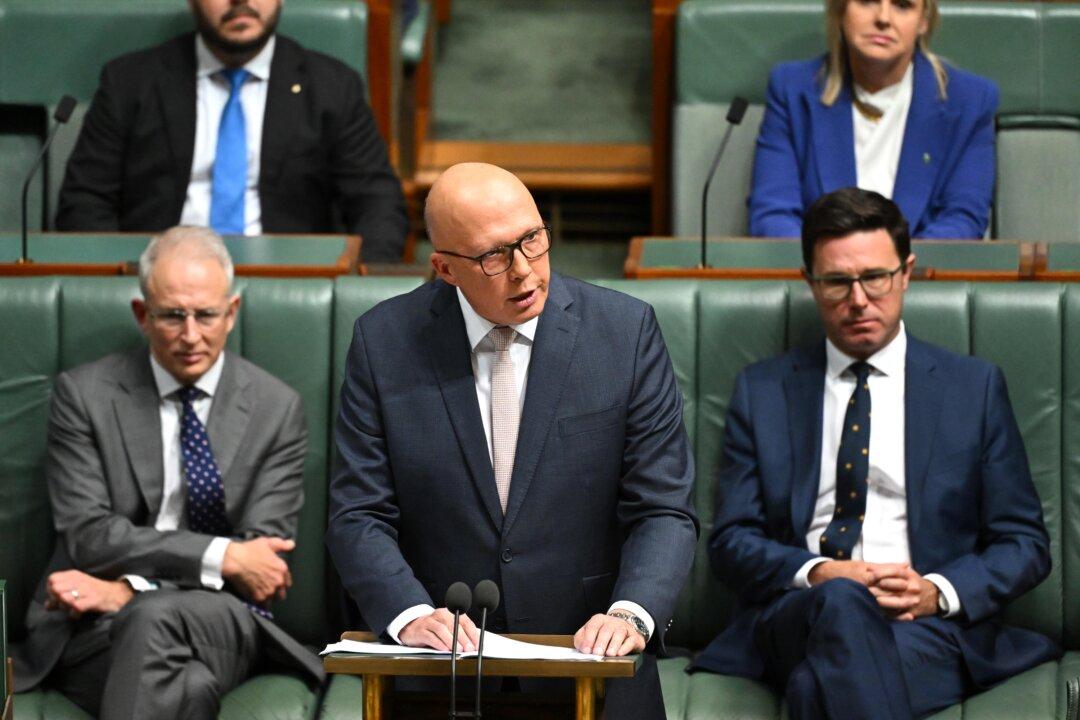This is not a good time to be treasurer.
Productivity in Australia has recorded its largest recorded quarterly drop ever; total GDP growth was positive but anaemic while GDP per capita went backwards, and interest rates, wages, and housing are all simultaneously rising.
Not that Treasurer Jim Chalmers bears all the blame. Prime Minister Anthony Albanese has to take some—the treasury doesn’t set immigration policy. But so too do their predecessors Scott Morrison and Josh Frydenberg, who profligately printed money all through the pandemic, aided and abetted by the Reserve Bank governor and the Labor team.
But it’s always the people who are on watch who get the blame, so first mate Chalmers needs to think about how to right the ship and present a new plan to Captain Anthony Albanese.

There are certainly no-go areas for him—either because they were a Labor promise going into the election or affect key Labor constituencies, like their owners, the union movement.
So they can’t touch wages but must still throttle contractors. Not to mention the redirection of resources into areas like child and aged care and the “energy transition” are going to continue.
This means a continuing battle with the current Reserve Bank governor, Philip Lowe. Or, if they replace him with someone compliant when his term is up in September, a continuing battle with inflation.
Even the Elite Greens Are Considering This
Every day we hear another story of a business threatening to close down or relocate because of either the price of energy or the availability of petrochemical feedstock. Today it is Orica. By the time you read this, it will be someone else.They are complaining about a lack of gas, which is just a part of the overall energy shortage story. Gas is partly in short supply because it is increasingly being called upon to shore up the unreliability of renewables.
It is also in short supply because New South Wales makes it difficult to produce new gas, and Victoria literally makes it impossible.
What Chalmers needs is an alternative to coal-fired power that is reliable, and maybe ABC’s Q+A audience has shown him a pathway.
Q+A is where the woke Greens hang out, watching it while tweeting to each other.
I used to watch it and tweet—it was a good way to meet the other brave like-minded souls who did the same thing—although that must have been about 10 years ago.

Since then, it’s turned so far-left that even the joy of sharing the madness with other rationalists has turned to pain. But thank goodness someone rational still watches it, or I would not have seen the results of a poll they ran.
I’m not claiming this result is representative of the whole population, but it would be representative of the Green-Left elite, where even a 50.4 percent result is revolutionary. And where that elite goes, the rest ultimately follows.
My think tank, the Australian Institute for Progress, polled on the nuclear issue in mid-2021 and found that there was more support for nuclear than the opposition, although support amongst Green and Labor voters was low. When asked for reasons why they might support nuclear, climate change was their overriding rationale.
Two years further into the energy “transition,” it is clear that things are not going to plan and that more radical options need to be considered to meet policy promises.
Ticking All Boxes
So what to do? The answer, per Q+A appears to be “Go nuclear young man”! Or, at the very least, think about it.In fact, it shouldn’t take a lot of thinking. Nuclear can fit into the existing grid with minimal modifications and is entirely reliable. It is much less resource-intensive than renewables, and if situated where existing coal-fired power plants are, much of the approvals work has been done.
If you use small modular reactors, then you should be able to copy the licensing regime from places with similar expectations to us where they are currently being approved, like the United States. Better still, the International Energy Agency deems nuclear as lower cost than just about anything else.

So not only do you take pressure off gas, but you reduce electricity prices in the process, as well as the demand on manpower and resources required to build a renewable-only system. It will also save the government outlays for networking the nation, as well as the subsidies that are the secret fuel of the renewables industry.
The savings thus released can go to build housing and invest in the mechanisation that will be required to increase productivity to a point where it can meet demands for higher wages without risking inflation.
Politically it should be appealing as well. Correctly reading the wind rival navigator, Opposition Leader Peter Dutton has already committed to looking at nuclear. It gives him a point of difference from Labor and a podium from which he can credibly address climate change without alienating his sceptical support base.
The nuclear option makes sense, and the sooner it is taken up, the better.





